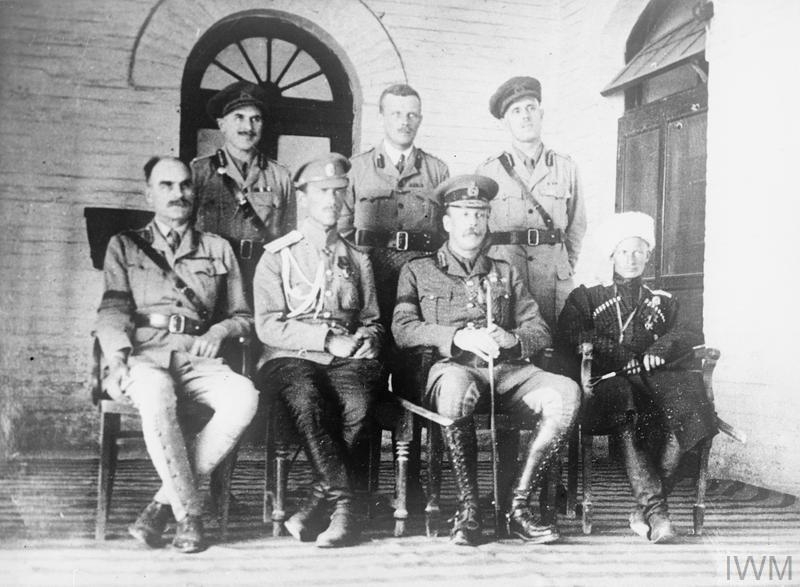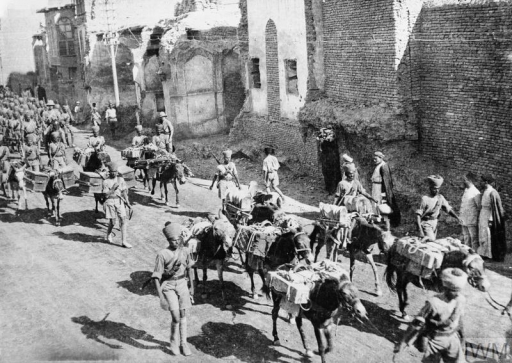Major Paul Knight’s latest article for Centenary News about the Mesopotamia campaign considers how Baghdad fell in a renewed Allied offensive a century ago.
In the early hours of 11 March 1917, British and Indian troops advanced through a dust storm and entered the fabled city of Baghdad. German and Ottoman troops had evacuated the city a few hours before. Several regiments claim to have been the first into the city, but today the Baghdad railway station bell is held by the Leicester Regiment’s museum.
This was not the first time the Anglo-Indian Army had approached Baghdad during the First World War. In November 1915, Major General Charles Townshend had fought an inconclusive battle at Ctesiphon, just 15 miles south of Baghdad. Both armies fought to a standstill, but the Ottomans were closer to their supply base in Baghdad and so it was Townshend who left the field and retreated, in good order, to Kut where he was besieged.
As part of the relief effort, Major General Frederick Maude and his 13th (Western) Division arrived from Egypt where they had been refitting following the Gallipoli campaign. 13th Division was the only all-British division to fight in Mesopotamia and amongst its subalterns were Bill Slim and Clement Attlee. In the cull of failed generals following Townshend’s surrender, Maude was promoted to command the Mesopotamian Expeditionary Force of two infantry corps and a cavalry division. Not bad for someone whose only combat experience at the outbreak of the war was as a company commander in the Boer War.

General Sir Frederick Stanley Maude (front row, second from right), British commander in Mespotamia, with staff officers and Russian counterparts based in Persia (Photo © IWM Q 25732)
Maude was no Donkey. He spent the summer of 1916 rebuilding his battered and demoralised army, paying particular attention to logistics. The failure of commanders to provide sufficient logistical support to achieve their aims had been a major factor in the defeats of 1915/16.
When Maude launched his offensive on 13 December 1916, his 7th Indian Division fixed the main Ottoman force in front of Kut while the bulk of his army on the right bank advanced though the desert to cross the Tigris behind Kut. Stubborn Ottoman defences in a bend of the Tigris and difficulties in crossing the river, 2-300 yards wide and in full spate, meant that most of the Ottoman defenders escaped the trap. Nevertheless, Maude achieved a significant victory, not least of which was the second capture of Kut.
Prestige
The British had feared that the loss of Kut would undermine their prestige in the East, especially coming so soon after defeat at Gallipoli; after Maude the Arab tribes noted that the British had captured Kut twice while the Ottomans had only succeeded in starving the British out. It was clear now that there would only be one outcome to the campaign and so Arab tribes started aligning themselves with the British again.
The Ottomans made a final defence of Baghdad on the Diyala river which took the British two costly assaults before they breached the Ottoman defences. From then it was only a matter of time before Baghdad fell.
Maude’s 1917 occupation of Baghdad was among the most peaceful in the city’s long and turbulent history. Law and order was quickly established, shops and other services resumed their normal routine and Maude set the tone for British rule. Unfortunately, Maude would not live to see the fruits of his achievements. He contracted cholera and died in Baghdad on 18 November 1917.
Also in Centenary News:
Gen. Frederick Stanley Maude – the ‘unknown victor’ in the Middle East
Kut-al-Amara: How & why the siege began in 1915
© Centenary News & Author
Images courtesy of Imperial War Museums © IWM Q 24196 (Indian troops in Baghdad); © IWM Q 25732 (Sir Frederick Maude group photo)
